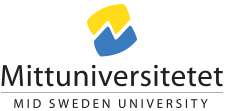Transform
Transform is a research project about a new process to produce delignified pulp based on mechanical pulp as raw material.
Project period
March 2016 – February 2017
Partners
Stora Enso Kvarnsveden, Valmet AB
Description
In Sweden, an annual production capacity of over 3 million tons of mechanical pulp exists, where a large share is or has been used for the production of paper qualities dedicated to newspapers. For some years, the has been an accelerating trend to move news reporting to the Internet, and this has made the mechanical pulp producers suffer hard from the decreased market demand for newsprint.
The goal of the TRANSFORM project is to investigate a new simplified process to produce delignified pulps based on mechanical pulp as raw material and to use choline-based deep eutectic solvents (DESs) for selective lignin dissolution. One expected use of produced semi-chemical pulps would be as reinforcement in other mechanical pulp based qualities. The vision is to ultimately benefit from the investments in refiners and bleaching stages already made in existing mechanical pulp mills. Based on a concept where fibers first are mechanically deliberated at low energy inputs (~100 kWh/t, "Asplund pulp"), the kinetics and degree of delignification for deliberated fibers will be compared with conventional chips treated with DESs. One assumption is that the delignification performed at these conditions is radically improved by the increased surface area and accessibility of mechanically deliberated fibers compared with chips treated in the same manner. Furthermore, using DESs issues with selectivity and degradation of cellulose and hemicellulose would be overcome.
If this hypothesis is correct, great opportunities to develop rapid, gentle and less capital intensive delignification process is foreseen. Thus, new semi-mechanical pulp qualities with physical and mechanical properties more similar to conventional chemical pulps and certain paper qualities would be possible to produce at lower cost and higher profits. Moreover, possibilities to design a delignification process generating sulfur-free lignin to be used in different applications compared with conventionally obtained kraft lignin, is offered.




